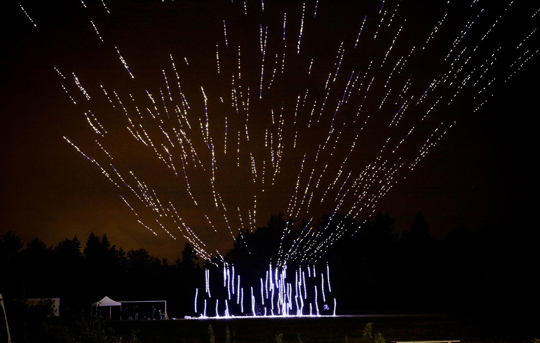Berlin, Nov 6: A new Guinness World Record has been set for the most Unmanned Aerial Vehicles (UAVs) flying simultaneously, as 500 drones performed a flawless routine together and put on the spectacular light show in Germany.

The record challenge featured a new UAV, weighing just 280 grammes and electrically operated with a rotor for flying, specifically designed for putting on dramatic lightshows.
All of the 500 drones moved as a single fleet, operated by one pilot with a laptop. Guinness World Records adjudicator Lena Kuhlmann officiated the attempt, counted the drones and ensured they all remained airborne for a minimum of one minute.
Intel Corporation put on the light show produced by hundreds of individual drones each fitted with an LED light in a football field in Germany.
The company first achieved this Guinness World Records title in 2015 with 100 drones.
The UAVs flew in a formation and drew the number '500' and then the company logo.
"These drones are able to fly as a fleet, this is the first time ever we can show it works so well with so many drones!" said Daniel Gurdan, Intel Engineering Lead.
"We're showing regulators around the world that UAV technologies used the right ways can help shape new rules for manned and unmanned aerial vehicles," said Natalie Cheung, Intel Light Show Business Lead.





Comments
Add new comment